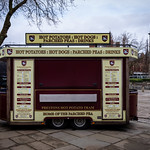- Preston City Council local elections 2024 candidates list set out
- Blog Preston reaches crowdfunding goal for expanded arts and culture coverage
- Harris Institute owners move to squash ‘for sale’ rumours
- “Unacceptable” and “must do better” as Preston records highest rough sleeper count since records began
- Preston Animate cinema reaches highest point in construction
The story behind one of Preston’s most famous families – the Ashton swans
Posted on - 11th October, 2020 - 12:00pm | Author - Kate Rosindale | Posted in - Ashton-on-Ribble, Ingol, Photos, Preston News, Tulketh, Wildlife and Conservation
Since spring, we’ve watched on in delight as the family of swans has survived and thrived on the Lancaster Canal in Ashton.
AdvertisementThe two adults have nurtured nine babies, who have developed from cute little creatures into almost fully-grown birds.
Photos and videos of each stage of their lives have been shared by many of Preston’s talented photographers, including Donna Clifford whose pictures appear in this article.
For more swan family photos from Donna, view the video below or on YouTube.
Here Diane Rollin, Ecologist at Canal and River Trust, gives the inside scoop on one of Preston’s most famous families.
“The Ashton swan family is one of the most familiar types to us in the UK, being mute swans (Cygnus olor). They are so called because they make comparatively little vocal noise whilst flying.
“While the Ashton family lives on the canal, mute swans can be found year-round on lakes and slow-moving rivers too, both in open country and in busier towns and cities.
“Mute swans usually mate for life. The Ashton parents will have formed strong emotional bonds when they paired up, with both playing a role in guarding and bringing up their offspring.

“The mother (pen) usually lays her eggs in April and incubates them for a period of five to six weeks.”

“The Ashton cygnets hatched around 3 May.

“Typically there will be between four and seven cygnets per clutch, so nine is more unusual. The juvenile survival rate is around 40 per cent, but all nine of the Ashton cygnets survived.
Read more: Swan rescued and rehomed in Southport after crash landing in Ashton backyard
“Once born, the fluffy grey cygnets are very vulnerable to predators like foxes, pike and crows, so in the first few weeks they are closely guarded by their parents.

“They can start to fly from around five months old.

“After the first few months, once their feathers are turning white, the parents will drive them away to fend for themselves.

“The juveniles form non-breeding flocks, and then usually start breeding themselves at around four years old. They don’t tend to stray too far from where they were born, but this depends on availability of food, space and proximity to water.

“Mute swans like the Ashton family are highly territorial and will often return to the same nesting site year upon year. If another family encroaches upon their territory, cygnets and even adults can be killed in the process.

Read more: Swan goes on walkabout in Ingol before reuniting with family on Lancaster Canal
“The swans’ diet will consist mainly of aquatic vegetation, of which many species can be found in our canals.

“During a harsh winter, they may struggle to find enough nutritious food and although they love being fed bread, it’s a bit like junk food, so grain and vegetables are preferable!
“The swans can sleep floating on the water or on land standing on one leg!

“All wild birds, their nests and eggs are protected under UK law and at the Canal and River Trust we strive to retain sufficient habitat for swans and all wild birds to nest, feed and shelter whilst facilitating safe navigation for our visitors. We also monitor and act on any pollution incidents which can affect water quality and the health of our resident fauna.
“There is nothing quite so relaxing as watching a family of swans pass by in early summer, cygnets whistling, parents proudly guarding.”
Read more: See the latest Preston news and headlines
Have you enjoyed watching the swan family grow? Let us know in the comments.












 Advertisement
Advertisement